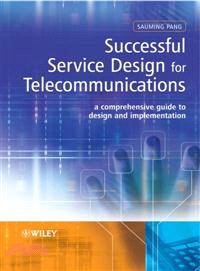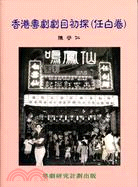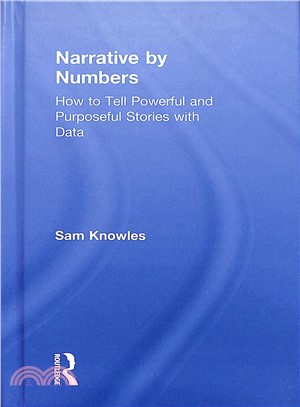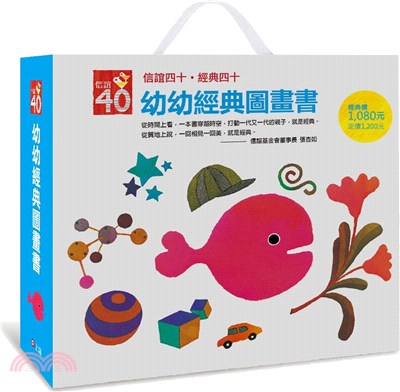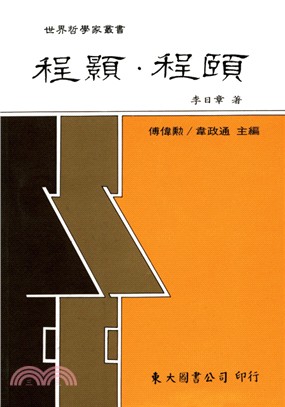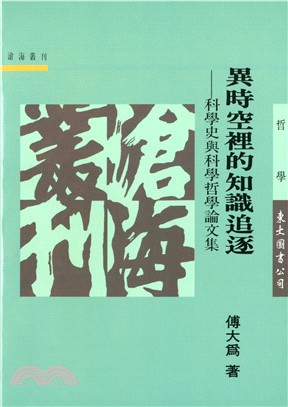Successful Service Design For Telecommunications -A Comprehensive Guide To Design And Implementation
商品資訊
ISBN13:9780470753934
出版社:John Wiley & Sons Inc
作者:Pang
出版日:2009/01/27
裝訂/頁數:精裝/360頁
定價
:NT$ 4786 元優惠價
:90 折 4307 元
若需訂購本書,請電洽客服 02-25006600[分機130、131]。
商品簡介
作者簡介
目次
相關商品
商品簡介
Comprehensive reference to successful service design for the telecommunications industry
Telecommunications companies operate in increasingly competitive environments. The companies that survive and excel are those offering the most compelling range of products and services. These services are complex since they touch all aspects of business. Service design and implementation skills are therefore the key for staying on top of the competition.
Successful Service Design for Telecommunications provides a comprehensive guide into service design and implementation. The author provides a consistent approach to designing scalable and operable processes that can be used when designing a variety of technologically based services; offering concepts, principles and numerous examples that the readers can easily adapt to their technological environment.
Key features:
Defines what telecommunications services are from business, technical and operational perspectives
Explains how telecommunications services can be implemented, including implementation strategies for both new service introductions and enhancements to existing services
The principles and management processes described can be used on all telecommunications services (fixed, mobile, broadband and wireless) and technology (e.g. IT and Internet) based services
Includes references to the current best practices and industry standards and complements the eTom and the OSS/ BSS models proposed by the TeleManagement Forum
Features numerous real-life scenarios and examples to support the discussion on the key concepts of service design
This book will be of interest to managers, service designers, project managers, IT professionals, operation managers and senior executives who work in the telecommunications sector. University students studying telecommunications, IT and service science courses will also find this text insightful.
Telecommunications companies operate in increasingly competitive environments. The companies that survive and excel are those offering the most compelling range of products and services. These services are complex since they touch all aspects of business. Service design and implementation skills are therefore the key for staying on top of the competition.
Successful Service Design for Telecommunications provides a comprehensive guide into service design and implementation. The author provides a consistent approach to designing scalable and operable processes that can be used when designing a variety of technologically based services; offering concepts, principles and numerous examples that the readers can easily adapt to their technological environment.
Key features:
Defines what telecommunications services are from business, technical and operational perspectives
Explains how telecommunications services can be implemented, including implementation strategies for both new service introductions and enhancements to existing services
The principles and management processes described can be used on all telecommunications services (fixed, mobile, broadband and wireless) and technology (e.g. IT and Internet) based services
Includes references to the current best practices and industry standards and complements the eTom and the OSS/ BSS models proposed by the TeleManagement Forum
Features numerous real-life scenarios and examples to support the discussion on the key concepts of service design
This book will be of interest to managers, service designers, project managers, IT professionals, operation managers and senior executives who work in the telecommunications sector. University students studying telecommunications, IT and service science courses will also find this text insightful.
作者簡介
Sauming Pang, MFY Ltd, Hong Kong
Sauming Pang is Marketing Manager of i-D eyes optical for MFY Ltd. She has of hands-on experience throughout the software and service development life-cycle in the telecommunication industry, having previously worked for Energis Communications Ltd and BT in areas such as Product & Services Development, System Integration and Verification & Testing.
A Chartered Engineer (CEng) Sauming Pang is also a member of the Institute of Engineering & Technology (IET), British Computer Society (BSC) and the Hong Kong Institute of Engineers of which she was the Hon. Treasurer (UK Chapter) 2003 – 2005.
Sauming Pang is Marketing Manager of i-D eyes optical for MFY Ltd. She has of hands-on experience throughout the software and service development life-cycle in the telecommunication industry, having previously worked for Energis Communications Ltd and BT in areas such as Product & Services Development, System Integration and Verification & Testing.
A Chartered Engineer (CEng) Sauming Pang is also a member of the Institute of Engineering & Technology (IET), British Computer Society (BSC) and the Hong Kong Institute of Engineers of which she was the Hon. Treasurer (UK Chapter) 2003 – 2005.
目次
Chapter 1. Introduction.
1.1 Who is this book for?.
1.2 Structure of the book and who should read which chapter
1.3 Definitions.
Chapter 2. What is Service Design?.
2.1 What is a service?.
2.2 What is the difference between a service and a product?.
2.3 Service vs. network capabilities.
2.4 What are the difference between a service and an application?.
2.5 Intra-domain vs. Inter-domain services.
2.6 What is Service Design and what is the role of a Service Designer?.
Chapter 3. Service – a Business Perspective.
3.1 Pre-conditions for service design.
3.2 Business requirements.
3.3 Market or marketing requirements.
3.4 Reporting requirements.
3.5 Security requirements.
3.6 Functional requirements.
3.7 Network planning requirements.
3.8 Non-functional requirements.
3.9 Regulatory, licensing and legislation considerations.
3.10 Financial constraints.
3.11 Physical location and space of network equipment and systems.
3.12 Service description template - a service description that fully defines the service
3.13 The success criteria for a service.
Chapter 4. Service Design Process.
4.1 What are they key steps to develop new services and service enhancements?.
4.2 How should the process link to business approvals at various Phases of the development?
4.3 Organizational changes and structure required to develop new services.
4.4 Resource requirement for designing services.
4.5 How you can use the service development process for one off customer requests?
4.6 Programme management structure.
4.7 Documentation and control structure for Service Design.
Chapter 5. Service Design – What needs to be done. .
5.1 Performing rapid impact analysis.
5.2 Performing feasibilities studies.
5.3 Design and develop.
5.4 Implementation and test
5.5 Service launch and operate.
5.6 Service withdrawal
Chapter 6. Service Building Blocks.
6.1 The Building Blocks.
6.2 Conceptual network architecture for fixed and 3G mobile services.
6.3 Interactions between the network and the support systems.
6.4 System functions required for all services.
6.5 Operational support processes for all services.
6.7 Summary.
Chapter 7. Network Design and Development
7.1 Network requirements.
7.2 Technical network considerations.
7.3 Service network design.
7.4 Network security.
7.5 Network Inventory.
7.6 Capacity planning, network planning and optimisation.
7.7 Service configuration in network elements.
Chapter 8. System Functions and Development
Systems requirements and methodology.
8.1 Inter-relationships between the functional areas in the systems domain.
8.2 Customer creation, order management and service termination.
8.3 Customer network provisioning and network termination.
8.4 Customer service provisioning (including moving, additions and changes)
8.5 End users creation and order management
8.6 End user network provisioning.
8.7 End users’ service provisioning, service control (esp. in QoS based services) and service termination
8.8 Billing, charging and rating.
8.9 Service accounting, revenue reporting, OLO bill reconciliation and revenue assurance
8.10 Fault management
8.11 Network management (monitoring and collecting events from the network) and service management
8.12 Performance management
8.13 Capacity management, traffic management and network planning.
8.14 Reporting.
8.15 System support and management
Chapter 9. Operational Support Processes.
9.1 Sales engagement processes.
9.2 Customer service processes.
9.3 Service and network provisioning.
9.4 Service management processes.
9.5 Network management and maintenance processes.
9.6 Network traffic management, network capacity management and network planning processes
9.7 System support and maintenance process.
9.8 Revenue assurance processes.
9.9 Process mappings to eTOM model
Chapter 10. Implementation Strategy.
10.1 What is implementation?.
10.2 What is implementation strategy?.
10.3 Why do we need an implementation strategy?.
10.4 What are the steps and approach to take when defining an implementation strategy?
10.5 Implementation strategy example.
Chapter 11. Service Integration and Service Launch.
11.1 Service Integration Model
11.2 Service Integration Strategy.
11.3 Test Environment vs Live Service Environment
11.4 Post Service Launch Reviews.
Chapter 12. Service Withdrawal, Migration and Termination.
12.1 Service Withdrawal
12.2 Service Migration.
12.3 Service Termination.
13 Glossary.
14 References.
15 Index.
1.1 Who is this book for?.
1.2 Structure of the book and who should read which chapter
1.3 Definitions.
Chapter 2. What is Service Design?.
2.1 What is a service?.
2.2 What is the difference between a service and a product?.
2.3 Service vs. network capabilities.
2.4 What are the difference between a service and an application?.
2.5 Intra-domain vs. Inter-domain services.
2.6 What is Service Design and what is the role of a Service Designer?.
Chapter 3. Service – a Business Perspective.
3.1 Pre-conditions for service design.
3.2 Business requirements.
3.3 Market or marketing requirements.
3.4 Reporting requirements.
3.5 Security requirements.
3.6 Functional requirements.
3.7 Network planning requirements.
3.8 Non-functional requirements.
3.9 Regulatory, licensing and legislation considerations.
3.10 Financial constraints.
3.11 Physical location and space of network equipment and systems.
3.12 Service description template - a service description that fully defines the service
3.13 The success criteria for a service.
Chapter 4. Service Design Process.
4.1 What are they key steps to develop new services and service enhancements?.
4.2 How should the process link to business approvals at various Phases of the development?
4.3 Organizational changes and structure required to develop new services.
4.4 Resource requirement for designing services.
4.5 How you can use the service development process for one off customer requests?
4.6 Programme management structure.
4.7 Documentation and control structure for Service Design.
Chapter 5. Service Design – What needs to be done. .
5.1 Performing rapid impact analysis.
5.2 Performing feasibilities studies.
5.3 Design and develop.
5.4 Implementation and test
5.5 Service launch and operate.
5.6 Service withdrawal
Chapter 6. Service Building Blocks.
6.1 The Building Blocks.
6.2 Conceptual network architecture for fixed and 3G mobile services.
6.3 Interactions between the network and the support systems.
6.4 System functions required for all services.
6.5 Operational support processes for all services.
6.7 Summary.
Chapter 7. Network Design and Development
7.1 Network requirements.
7.2 Technical network considerations.
7.3 Service network design.
7.4 Network security.
7.5 Network Inventory.
7.6 Capacity planning, network planning and optimisation.
7.7 Service configuration in network elements.
Chapter 8. System Functions and Development
Systems requirements and methodology.
8.1 Inter-relationships between the functional areas in the systems domain.
8.2 Customer creation, order management and service termination.
8.3 Customer network provisioning and network termination.
8.4 Customer service provisioning (including moving, additions and changes)
8.5 End users creation and order management
8.6 End user network provisioning.
8.7 End users’ service provisioning, service control (esp. in QoS based services) and service termination
8.8 Billing, charging and rating.
8.9 Service accounting, revenue reporting, OLO bill reconciliation and revenue assurance
8.10 Fault management
8.11 Network management (monitoring and collecting events from the network) and service management
8.12 Performance management
8.13 Capacity management, traffic management and network planning.
8.14 Reporting.
8.15 System support and management
Chapter 9. Operational Support Processes.
9.1 Sales engagement processes.
9.2 Customer service processes.
9.3 Service and network provisioning.
9.4 Service management processes.
9.5 Network management and maintenance processes.
9.6 Network traffic management, network capacity management and network planning processes
9.7 System support and maintenance process.
9.8 Revenue assurance processes.
9.9 Process mappings to eTOM model
Chapter 10. Implementation Strategy.
10.1 What is implementation?.
10.2 What is implementation strategy?.
10.3 Why do we need an implementation strategy?.
10.4 What are the steps and approach to take when defining an implementation strategy?
10.5 Implementation strategy example.
Chapter 11. Service Integration and Service Launch.
11.1 Service Integration Model
11.2 Service Integration Strategy.
11.3 Test Environment vs Live Service Environment
11.4 Post Service Launch Reviews.
Chapter 12. Service Withdrawal, Migration and Termination.
12.1 Service Withdrawal
12.2 Service Migration.
12.3 Service Termination.
13 Glossary.
14 References.
15 Index.
主題書展
更多
主題書展
更多書展今日66折
您曾經瀏覽過的商品
購物須知
外文書商品之書封,為出版社提供之樣本。實際出貨商品,以出版社所提供之現有版本為主。部份書籍,因出版社供應狀況特殊,匯率將依實際狀況做調整。
無庫存之商品,在您完成訂單程序之後,將以空運的方式為你下單調貨。為了縮短等待的時間,建議您將外文書與其他商品分開下單,以獲得最快的取貨速度,平均調貨時間為1~2個月。
為了保護您的權益,「三民網路書店」提供會員七日商品鑑賞期(收到商品為起始日)。
若要辦理退貨,請在商品鑑賞期內寄回,且商品必須是全新狀態與完整包裝(商品、附件、發票、隨貨贈品等)否則恕不接受退貨。

